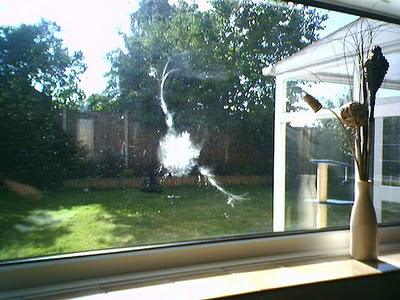When windows are clean and clear, birds often see only what is on the other side, which may include greenery and sky. As a result, unsuspecting birds sometimes fly straight into the glass at full speed. Also, they may see decorative plants inside glass lobbies or homes and try to land on them.
Coated reflective glass can also be a problem. Under certain conditions, birds may see, not the glass, but a reflection of the surrounding area or sky and, here again, come to grief. Birds have even been killed by glass at visitors’ centers and on observation towers at bird sanctuaries and wildlife refuges! Ornithologist and biology professor Dr. Daniel Klem, Jr., believes that more birds are killed by flying into windows than by any other cause related to human activity, except perhaps habitat destruction.
Some birds are especially vulnerable to crashes. Most migratory songbirds, for example, fly toward their destination at night and navigate, at least in part, by the stars. As a result, they may become confused by bright lights on tall buildings. Indeed, some birds have become so disoriented that they have flown around aimlessly until they dropped from exhaustion. Another danger occurs during nights of rain or high cloud cover. On such occasions, birds tend to fly at lower altitudes, which increases their risk of crashing into tall buildings.
The Impact on Bird Populations
Just one tall building in Chicago, Illinois, U.S.A., caused an average of about 1,480 known deaths during migration season, according to one report. Thus, over a period of 14 consecutive years, that one building caused the death of some 20,700 birds. Of course, the total number of bird strikes was no doubt much higher. Moreover, these birds “are not the pigeons, gulls, or geese,” says Michael Mesure, director of the Fatal Light Awareness Program of Toronto, Canada, but “birds with endangered populations.”
For example, in Australia in one recent year, glass killed about 30 swift parrots, of which only 2,000 remain. In the United States, many museum specimens of Bachman’s warbler, now possibly extinct, were gathered from collisions with one particular lighthouse in Florida.
Of the birds that survive building strikes, many are injured or weakened. This can be especially hazardous for migratory birds. If they are hurt and come down within a concentration of buildings, they may die of hunger or predation by other animals, some of which have learned to exploit this occasional food source.


 1:14 PM
1:14 PM
 Hmm
Hmm



 Posted in:
Posted in: 









0 comments:
Post a Comment